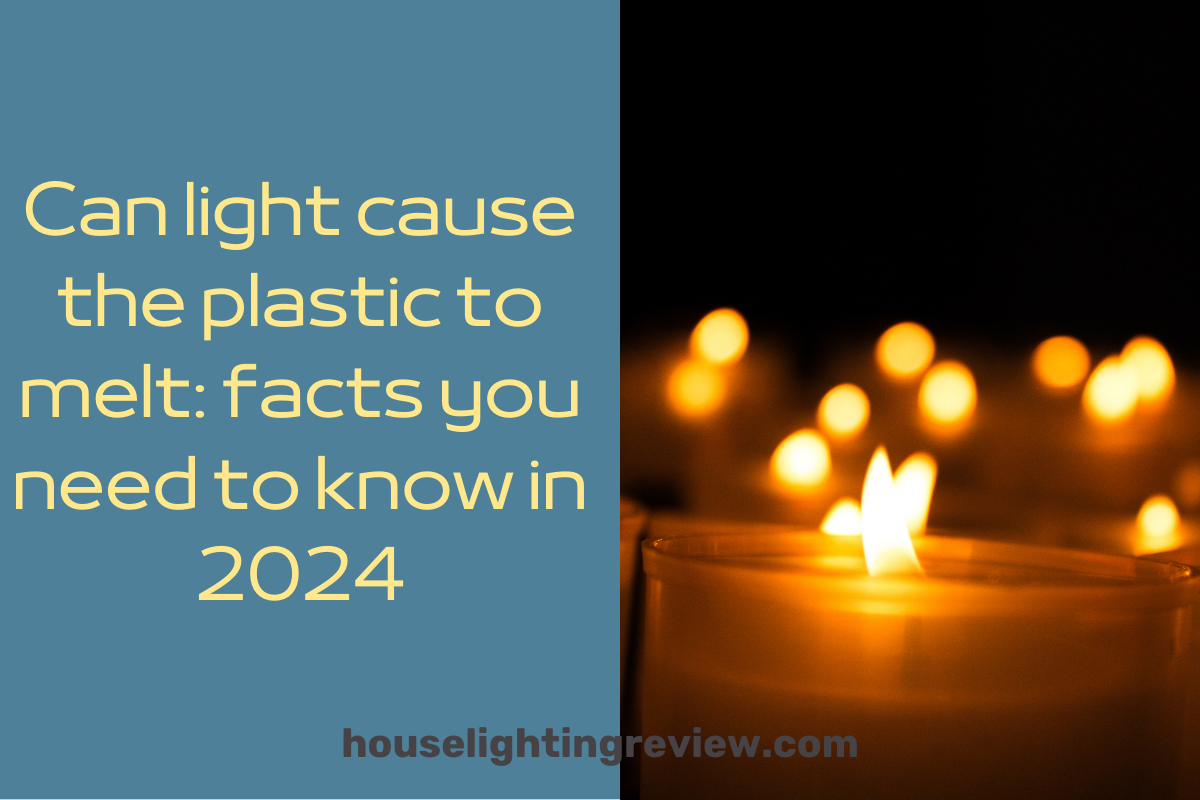
Can light cause the plastic to melt? Plastic is a modern marvel composed of long chains of polymers resembling small molecular strands. It has a melting point, which is the temperature at which it transitions from a solid to a liquid.
This article provides an answer to the main question – can light cause the plastic to melt, as well as at what temperatures melting occurs and what kind of light is most harmful and causes plastic to melt?
Types of plastics and their melting points

Plastic melts when heated to a specific temperature, causing it to change shape and become malleable.
However, the extent of softening depends on the type of plastic used, as each plastic has unique properties and melting points.
- PE
Polyethylene (PE) is a soft polymer with two main types: LDPE and HDPE. It loses rigidity and melts at high temperatures, with LDPE at temp as low as 221°F (105°C) and HDPE at 257°F (125°C).
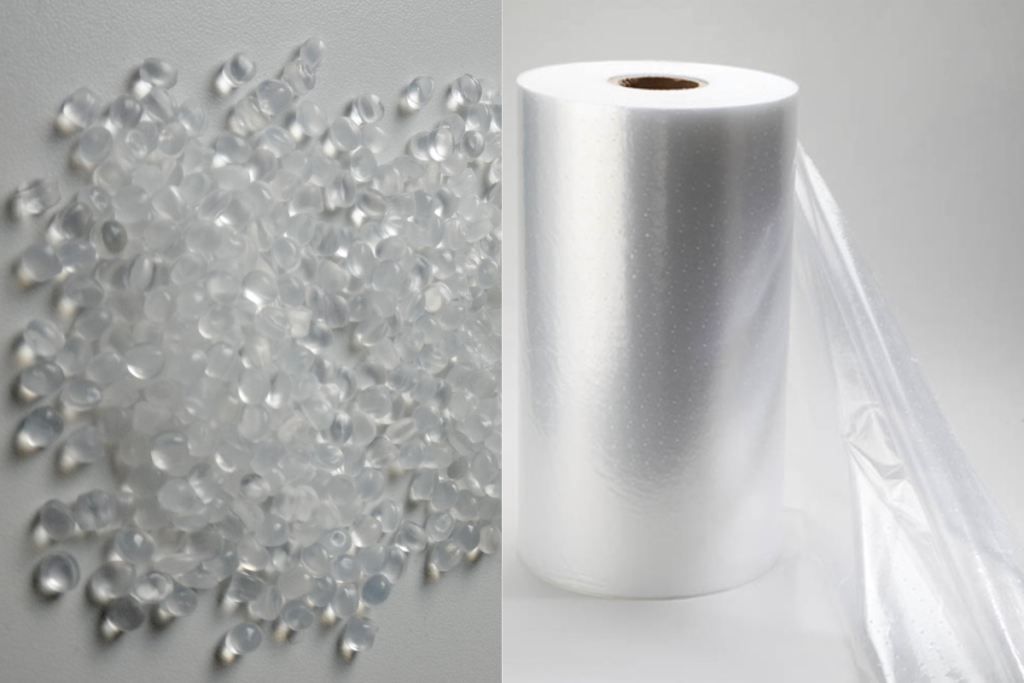
- PP
Compared to high-density polyethylene, polypropylene (PP) is a harder and stiffer plastic. It also has a higher melt point of 329°F (165°C). However, it has a more rapid loss of properties at lower temperatures.

- PVC
PVC is widely used for plastic fixtures in industries such as sewerage, flooring, medical components, and insulation due to its strength and high temperature when it becomes softer at approximately 410°F (210°C).

- PA
Polyamide, known as nylon, has a high melt temperature of 392°F (200°C). However, it weakens when exposed to water. It is commonly used in clothing due to its fabric-like properties.
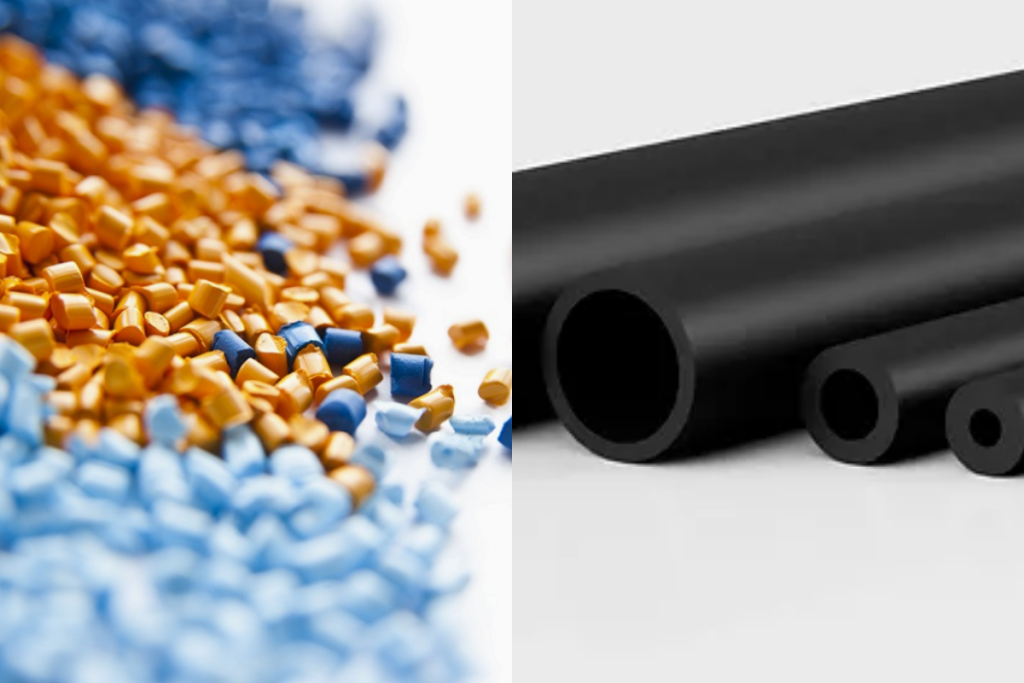
- PS
Polystyrene (PS) is a polymer commonly used to manufacture foams due to its low melt temperature of approximately 194°F (90°C).
It’s important to note that these temperatures are approximate and can vary based on the specific grade and additives used in the production of each plastic. Additionally, some plastics may undergo thermal degradation before reaching their melting points. Always refer to the material specifications provided by the manufacturer for accurate information.
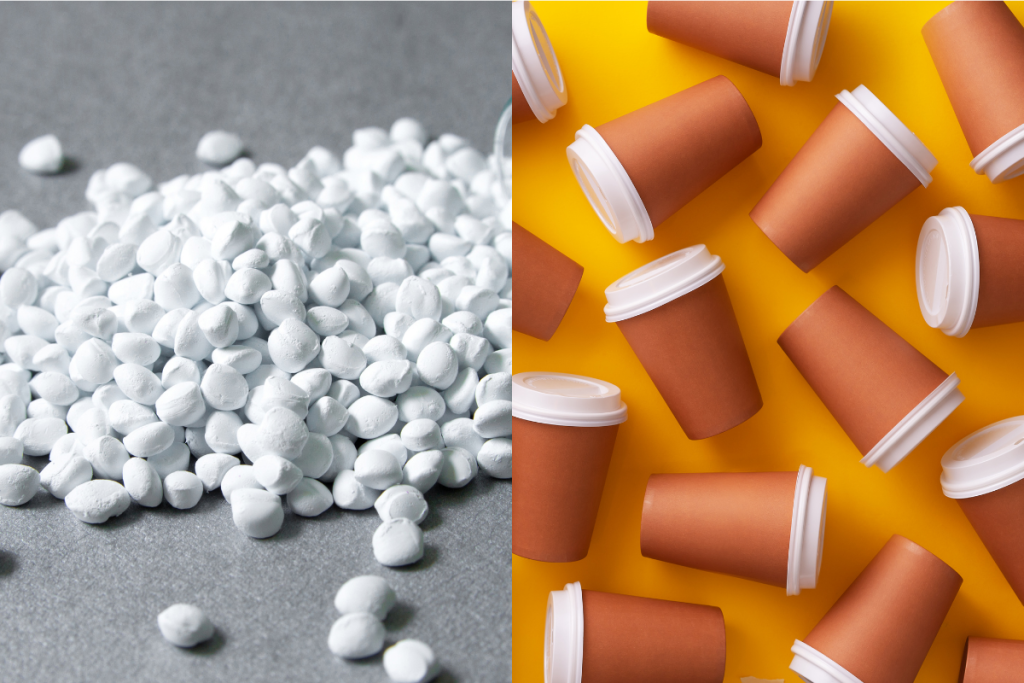
What type of light melts plastic?

In trying to find the answer to whether can light cause the plastic to melt, it is important to identify the type of light that affects the plastic The type of light that causes the plastic to melt also depends on the specific type of matter used. For example, some plastics are more sensitive to ultraviolet light (UV), while others may be more sensitive to visible light or infrared light (IR).
High-intensity light can transfer energy to the plastic molecules, causing them to vibrate at a higher frequency and raising the temperature of the plastic, eventually causing the plastic to melt.
It is important to note that there is a difference between melting and softening plastic. It also happens that some polymeric matters only soften and weaken when exposed to sunlight, heat, and ultraviolet radiation.
What is the effect of UV light on plastic?

Perhaps the most accurate answer to the question of whether can light cause the plastic to melt lies precisely in this section.
UV light is the most damaging environmental factor that can cause plastic to melt.
Plastics can absorb UV energy, which can create free radicals that, in the presence of oxygen, form oxygen hydroperoxides. These hydroperoxides break the double bonds of the backbone chain, resulting in a brittle structure. This process is called photo-oxidation.
Exposure to UV light bulb radiation can cause discoloration and deterioration of physical properties, particularly impacting impact strength, tensile strength, and elongation.
Therefore, designing polymeric matter parts without a clear understanding of degradation mechanisms under environmental exposure will result in premature light bulb failure.
Can LED light bulbs melt plastic fixtures?
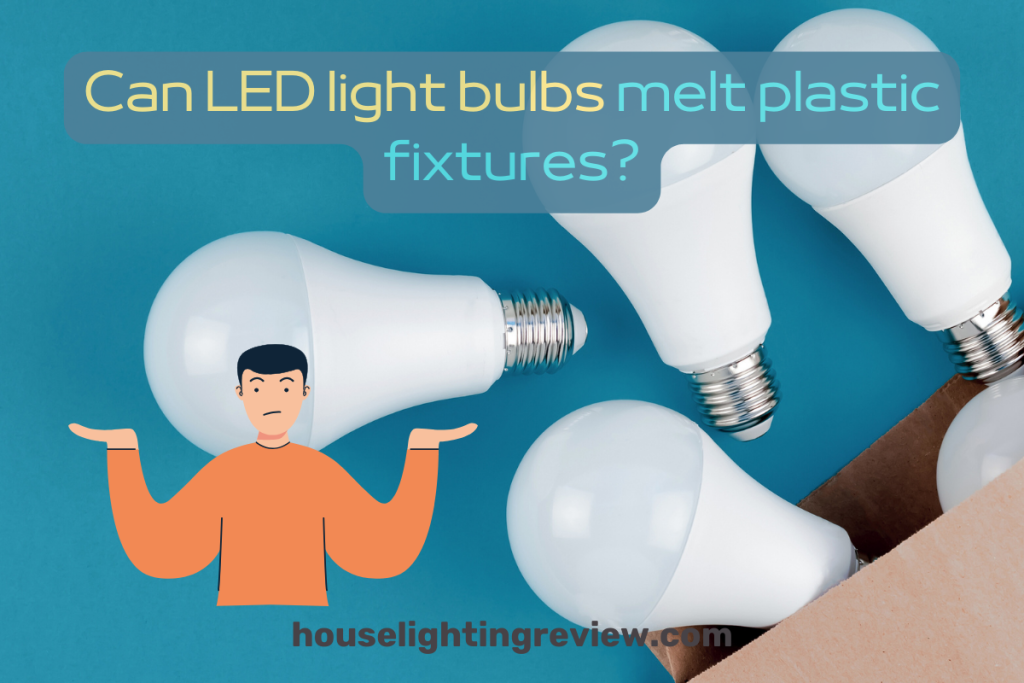
An LED light bulb will not impact plastic light fixtures. LED lights use fewer watts of electricity than conventional incandescent bulbs. They are more efficient in converting electrical energy into light.
An LED bulb’s housing is made from the same kind of polycarbonate plastics as lighting fixtures, so it won’t get softer until it hits at least 280°C (536°F) – often higher.
LED bulbs do not generate enough heat to melt plastic fixtures, even at the base, unlike incandescent halogen and fluorescent light bulbs. An LED bulb uses field-induced polymer electroluminescent (FIPEL) technology, which should remain stable for many years without constant exposure to heat.
LED lights are designed to dissipate heat away from the bulb and out through the base to prevent poor performance when exposed to heat.
For example, the electrical energy of halogen lamps or light fixtures, which combine tungsten filaments and halogen gas, emit more energy than LED lights about 180°C or 357°F on average. All it takes is one such heat lamp operating at about 20% above normal temperature to cause plastic to melt.
Improper use of any heat lamp, or lighting fixtures, from fluorescent to incandescent to halogen, can cause a fire. When using such light bulbs, a lot of electrical energy goes into heat, so it is better to buy LED light bulbs as such LED lights do not emit harmful gases and do not contain mercury and other pollutants.
In addition, LED lights do not contain ultraviolet rays, eliminating the risk of skin and eye damage.
How much heat do LED bulbs get?
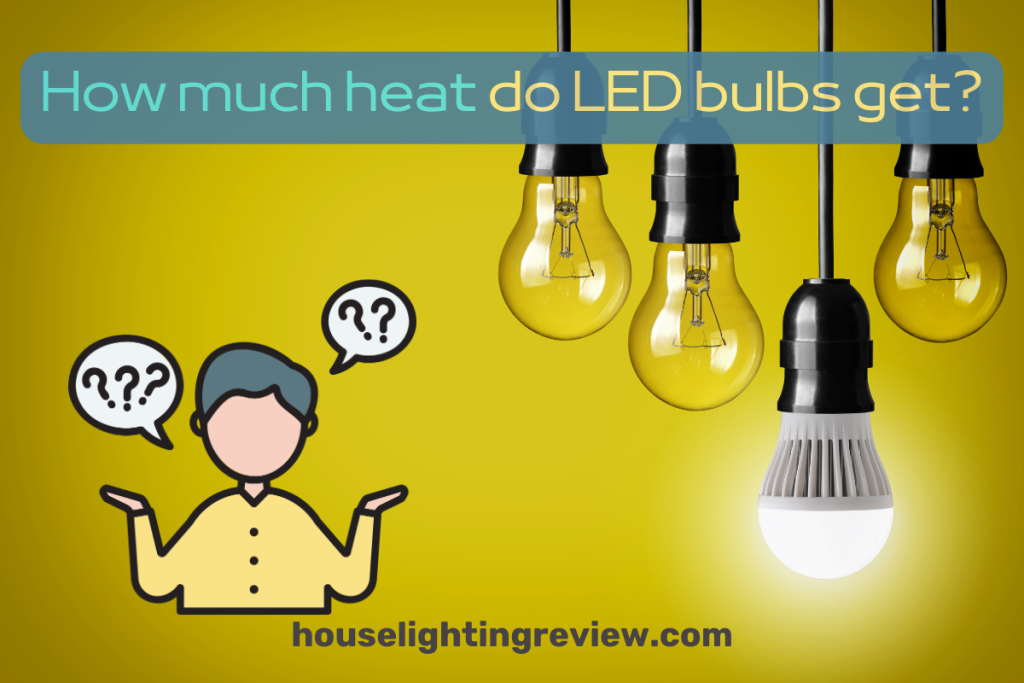
An LED bulb usually reaches a temperature of 145-175°F (63-80°C) at its base, which is the hottest part. This temperature depends on the quality of the light bulbs and the heat sink used.
Tests indicate that the bulb housing around the diode only heats up to an average of 85°F or 30°C, which is only slightly above room temperature. This temperature is reached after the LED light bulbs have been in operation for at least 30 minutes.
Hazards of light-melting plastic

Direct contact between the polymeric matter and the heat lamps where high temperatures form energy and cause the plastic to melt and release toxic gases. Inhaling these gases puts you at risk of respiratory problems such as airway irritation and increased risk of asthma. You may also be at risk of developing cancer, and liver and kidney damage from exposure to these fumes.
Melting also increases the risk of fire, as it releases flammable gases that can ignite under certain conditions. This is especially important for those who work in industries that generate a lot of waste, such as manufacturing or landfills.
Therefore, when handling molten polymeric matter, precautions must be taken to avoid inhaling vapors and every precaution must be taken to prevent fire.
Conclusion
In general, to answer the question of whether can light cause the plastic to melt, it can be said that plastic only melts when exposed to certain light.
For example, exposure to UV light can cause the physical properties to deteriorate and consequently melt plastic.
However, it is also the case that some plastics are immune to UV radiation from the sun. Although the sun is a heat source, the intensity of sunlight is not sufficient to reach the melting point of some plastics.
LED lights, on the other hand, do not cause the plastic to melt. LED lights do not generate enough heat even at the base.
LED lights are also more environmentally friendly than halogen and fluorescent lights as they do not emit toxic gases.
Having considered the different types of light and their effects on plastic, hopefully, you’ve got an answer to the question of whether can light cause the plastic to melt.
Topics & Questions
Here is a list of questions on topics that will help complement the discussion about whether can light cause the plastic to melt.
What light melts plastic?
The answer is that UV light is thought to be the light that causes plastic to melt. But in fact, any type of light can cause plastic to melt if its intensity is high enough. This is because light is a form of electromagnetic radiation, releasing its energy in the form of heat when interacting with matter.
But, in this case, the exception is LED lights. LED lights can not melt plastic luminaires, because their base is made of plastic and they do not heat up enough. In addition, LED lights are an environmentally friendly solution, since they do not emit dangerous gases.
What makes plastic melt?
The simple answer is that the heating of plastic leads to a transformation of their state since the increase in temperature increases the stock of average thermal energy of polymer macromolecules, hence the mobility of macromolecules increases.
How does light interact with plastic?
When light hits a plastic surface, its interaction with the material depends on factors such as the type and thickness of the plastic.
Thicker pieces of plastic absorb most of the light, causing it to scatter inward without passing through to the other side. Thinner ones allow some light to pass through and illuminate other parts of the surface.
Can infrared light melt plastic?
Infrared radiation heats plastic parts within a few seconds directly on their surface. Burrs can therefore be easily melted.

